When Satire is Overwhelmed by Reality: Moon Missing: Edward Sorel’s Report on Future Events
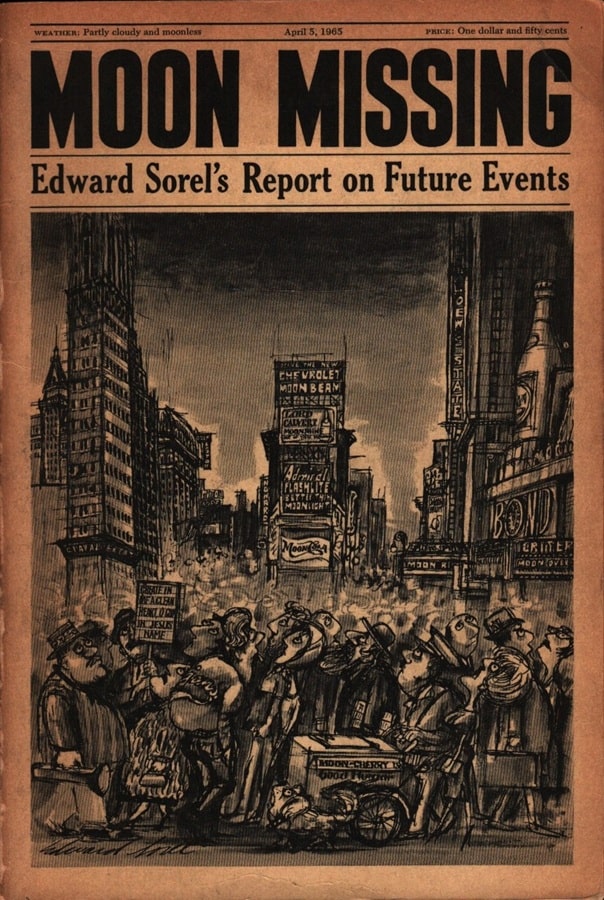
At about 1:46 am EST in the middle of the American night of April 4, 1965 the Moon disappeared. The American people were informed the next day at a Presidential news conference. President Kennedy was in no way responsible, said Allen Dulles, disgraced former CIA director but now Secretary of the Exterior, tapped to safeguard American interests in outer space.
Cartoonist, caricaturist, satirist Edward Sorel published Moon Missing in 1962. He had no need to prognosticate the future; the world around him gave him all the ammunition his ink Speedball B6 required.
So insistent are we today that the early Sixties were a more innocent time that the reality of the fear, paranoia, tension, and general unhappiness of the era can only be exhumed from period pieces. Sorel’s vision of the craziness ready to be let loose by a global event relied heavily on contemporary names in the news, but to find frighteningly many parallels in today’s world the names need only to be changed to modern equivalents.

Born Edward Schwartz in 1929, Sorel found his artistic future while spending a year in bed as a child, much as young Richard Starkey found the drums as solace during a similar confinement. Still alive today and very much the Grand Old Man of caricature and cartoon satire with an endless catalog of important works, Sorel was a struggling freelancer in 1962. His early books for adults were such failures that even his own website doesn’t bother to mention them. To supplement the advertising work he was building a reputation for, he sent his satires out to every magazine that would accept such heresy, keeping his name before the public.
Moon Missing was excerpted in the motley foursome of Horizon, Sports Illustrated, Show Magazine, and Caterpillar. Caterpillar? Since the avant garde The Caterpillar Magazine didn’t debut until 1967 and the children’s magazine of that name was far in the future, I am forced to conclude he meant Caterpillar News and Views, the house magazine of the bulldozer giant. To imagine the improbability of that Venn diagram, try to conjure an appearance by R. Crumb in IBM’s THINK magazine. My brain boggles.
Moon Missing is set as a series of brief daily newspaper reports from the alternate future of 1965, the foundation Sorel uses for his plethora of illustrations. The double-page below sets the tone. New Yorkers parade down the sidewalk, oblivious to all but their smartphones – I mean, newspapers – while the news ticker accuses the Communists for the disappearance.
First to react is the Gallup Poll. The public is eternally divided on all issues.
And politicians are eternally hypocrites.
Clueless politicians can be found in every era, but the sweetener here is the reminder that J. Edgar Hoover used the FBI as a personal internal police, a part of the past we should never want revisited. “Involves national security.” Ring any recent bells?
Every bit of today’s battle of right and left wings already existed in 1965.
So much commentary is packed into these two pages alone.
Lest you think Sorel was himself nothing more than a muddle-headed liberal, be assured that he applied his gimlet eye to the Kennedy administration as well.
Fortunately for the economy, capitalists will always find a way to cope.
As world tensions soar, Kennedy and Khrushchev meet and sign a Mutual Moon Aid Pact, and talk about complete disarmament. And then the worst possible news.
 Look at the date. July 4. If you were Khrushchev would you think that was a coincidence? Or would even Americans? So much for world peace.
Look at the date. July 4. If you were Khrushchev would you think that was a coincidence? Or would even Americans? So much for world peace.
And Sorel, the old advertising guy, can’t help but add a coda that triggers the memories of us graybeards.
The book should have been a bestseller. Unfortunately for Sorel’s career, Moon Missing was published on the first day of the sensational and long-lasting New York newspaper strike. Few events speak more to New York’s absolute cultural dominance over the country in the early sixties. All other media took their cues from the New York papers. Anything not reviewed there had little chance of notice, much less success, elsewhere. The rave review in the Tampa Tribune didn’t save it. Kennedy’s assassination the next year thoroughly destroyed any chance of a later revival; reading about a living Kennedy presidency in 1965 would be little more than a sick joke, sicker than the ones Sorel actually told. (The hard-luck Sorel later created a poster attacking the war-mongering Cardinal Spellman of New York, but it was released the day the cardinal died. Live by satire, die by irony.)
The good news is that in 1963 Sorel was named art director of Monocle, a magazine of savage political satire that matched his sensibilities perfectly. From there he went to Ramparts, New York, and the National Lampoon, and was discovered by more mainstream magazines, seldom disguising his disdain for all that was wrong with society and politics. For me he will always be indelibly etched in my memory for his nsfw drawing of a rockette line of nude world leaders covering their private parts with large erect rockets pointed at the rest of humanity. If you dare, search for Robert Scheer’s Thinking Tuna Fish, Talking Death: Essays on the Pornography of Power, the most perfect title for a Sorel cover ever devised.
ETA: I have a coda as well and it may be less believable than Sorel’s satire. We live in a time when satire is overwhelmed by reality. Only datelines can differentiate them. While writing this article my eye was caught by a report on American First Policy Institute ambassador Kambree Nelson. Nelson was invited to the White House’s “new media” press conference for influencers where she gained attention for a particularly softball question, leading the curious to check her history. They quickly discovered that in October 2024 she sent a Xitter out to her 625,000 followers: “Has anyone seen the moon lately? I’ve been looking for 7 days.” When even some of her followers told her that the moon was right up there, she replied. “It’s not out. None of my friends in 4 states can find it.”
Tom Lehrer once proclaimed, “Political satire became obsolete when Henry Kissinger was awarded the Nobel Peace Prize.” Ironically, both he and Edward Sorel have lived to see this brave new world. Irony may not be dead, but satire is limping with both feet.
Steve Carper is the author of hundreds of articles on fascinating, if obscure and forgotten, tidbits of history, as well as the seminal book Robots In American Popular Culture. All of his websites are linked at SteveCarper.com.






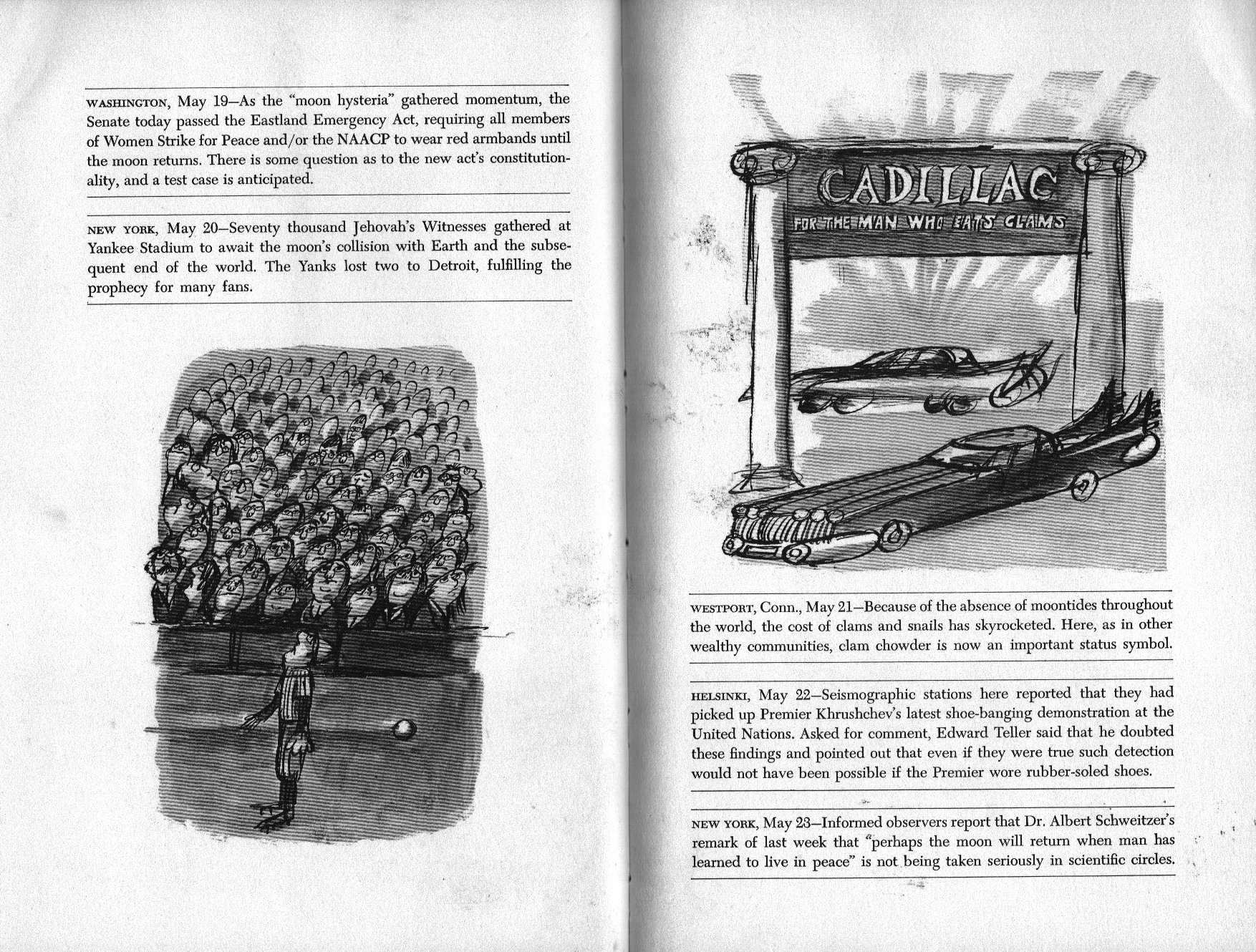
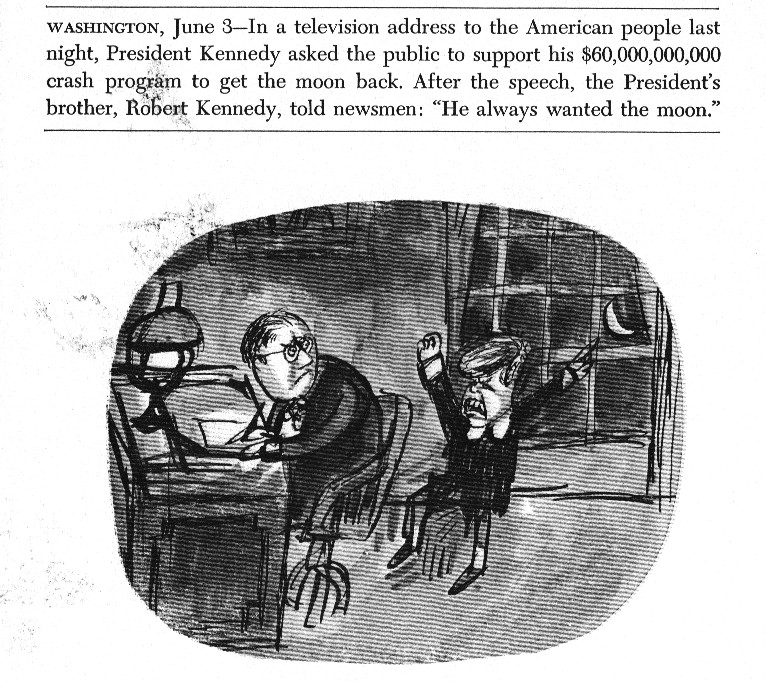
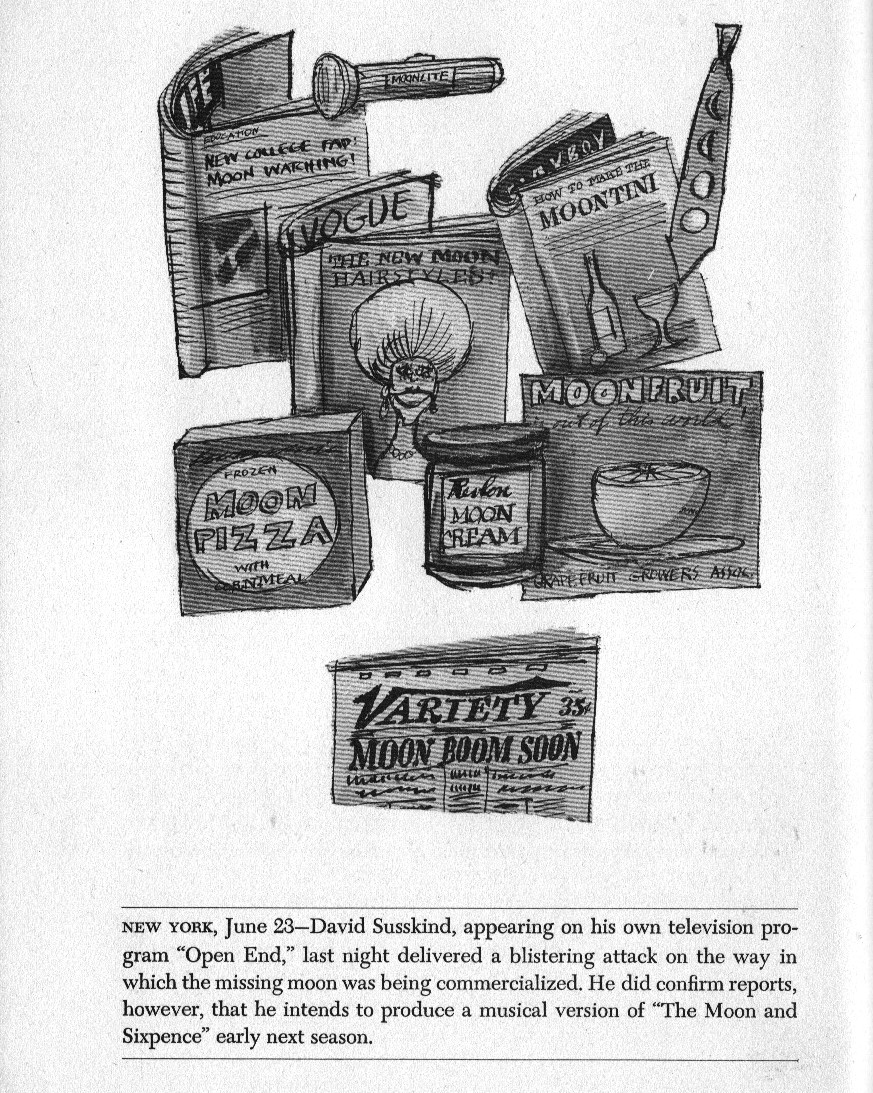
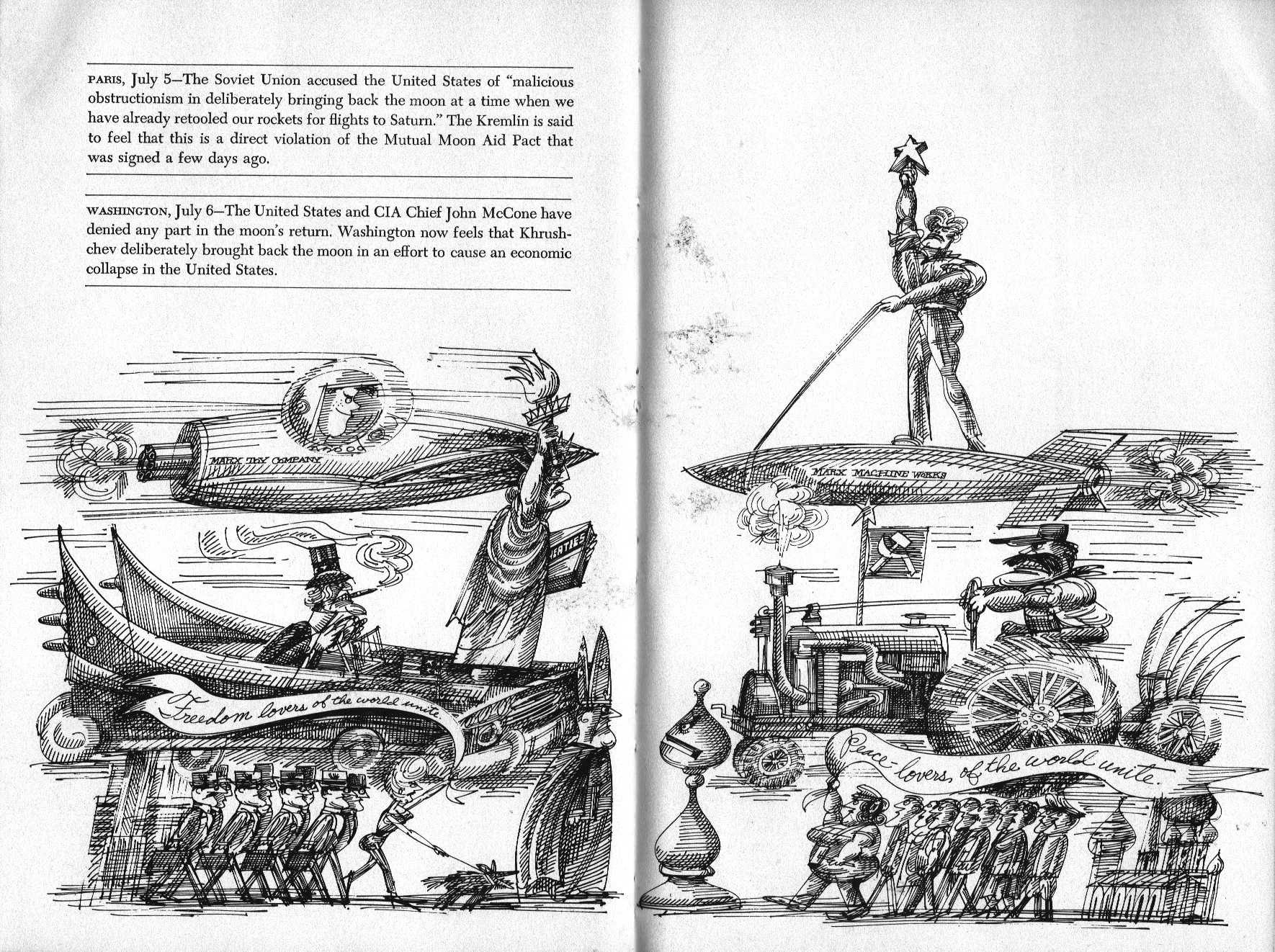
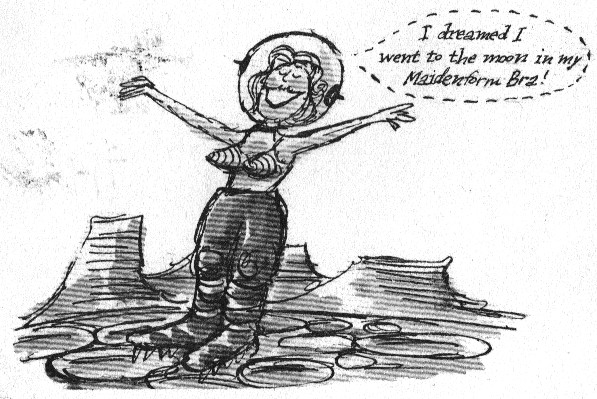
Seems as though Mr. Sorel was as lucky as Vaughn Meader, whose comedy album, The First Family, came out in 1962 as a good-natured ribbing of the Kennedy clan. Then, poof!
I had never seen this before! And I got the Maidenform Bra joke—back in High School in the Seventies, I got to read a bunch of bound Life Magazines from the Thirties onward and saw those ads!